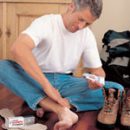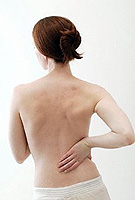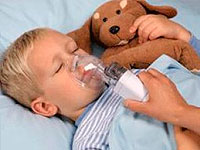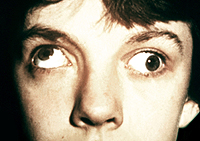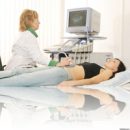What to do if your child fell and hit his head? What to do if your child got injurious neck, back or unsuccessfully fell and knocked out tooth? Children's burns. How to give a child first help? Answers to all questions you can get from this article.
Content
What to do if the child hurt or injured if he began nose bleeding or he swallowed any object? Today we will talk about these troubles that lie down our babies at every step.
Neck and back injuries
The spinal cord is part of the nervous system that controls the movement of all limbs and is responsible for the normal operation of the bladder and intestines. These are just some of its functions. It is usually protected by a bone pillar (vertebral pillar). Due to the severity of the neck or back injury, it is important not to move the victim in order not to injure even more. Only the medical specialist should move and move the child if you suspect that he has a fracture of the neck or spine.
If the child needs to move, and the ambulance car has not yet arrived, one person must support his head and neck to be fixed. When moving the child, he must keep his head all the time and neck of the child in one position. So you reduce the possibility of further injury to the spinal cord.
Child head injuries
Head injuries - the most common type of injury at any age. Without starting to walk, the child can get injured head, having lunged from a bed or a table for swaddling. If a child after falling loses consciousness, it should immediately show a doctor. Any child who received injuries of the head should carefully examine the doctor. If, after hitting the head, the child immediately cries, and then it calms down for 15 minutes and there is no vomiting, then the brain injury is unlikely.
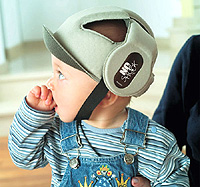 When the head injury is more serious, the child may be sick, he loses appetite, pale, it is noticeable signs of headache and dizziness, alternating with attacks of excitement and apathy, while the child is more drone than usual. If a child has some of the listed symptoms, you should contact a doctor.
When the head injury is more serious, the child may be sick, he loses appetite, pale, it is noticeable signs of headache and dizziness, alternating with attacks of excitement and apathy, while the child is more drone than usual. If a child has some of the listed symptoms, you should contact a doctor.
In the absence of such symptoms, a bump on the head of a child, formed as a result of a fall, does not say anything serious. Just burst blood vessel under the skin.
Even if the child did not immediately have any alarming signs, he should be carefully examined by the doctor over the next 24 - 48 hours.
If the child's head injury is heavy, the doctor may assign a special x-ray examination to identify some damage, such as a crack or hematoma.
And finally, watch the child's academic performance in school after injury. In children with a concussion of the brain, t. E. With the injury of the head, accompanied by loss of consciousness or memory, difficulties may occur with the concentration of attention or memory loss.
In case of injury of the oral cavity
Damage to teeth when child fall
All teeth can damage, but the front is most susceptible to injuries. Teeth can be broken, shifted or knocked out. Dentists are concerned about injuries of constant teeth, the consequences of which are felt by the rest of the life. Parents should consult a dentist after receiving the child's injury to the child. Some damage is not easy to determine the eye, the specialist can put an accurate diagnosis and proceed with treatment.
Broken teeth. The tooth consists of three layers: external protective - enamel, then an internal supporting structure, called dentin, and the central part - the soft tissue in which the nerves, or toothpill are. Crack (fracture) in the tooth can affect some or all layers of the tooth. For a small crack, only polished by the emery heads performed by the dentist. A deeper crack will require the restoration of the tooth to restore its shape, functioning and appearance. If, as a result of the crack, the cavity in the central part of the tooth was formed and the pulp is visible (where blood usually flows from), you need to consult a dentist as soon as possible with a dentist to eliminate damage and prevent the pulp loss. If the pulp of the tooth has lost their viability, the tooth can still be saved by the removal of non-visual pulp fabric and filling the root canal sterile substance. After that, the tooth can be restored in the usual way.
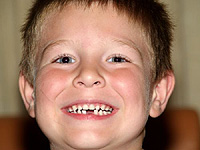 Flawing teeth. In most cases, slightly stunning teeth without any treatment will restore strength in a few days. However, sometimes the teeth are so stronger that the dentist has to impose a tire for their stabilization until they restore. Sometimes in order to avoid infection in the pulp and in the connecting cloth it is necessary to use antibiotics. During the period of healing process, the dentists will advise adhere to a light diet.
Flawing teeth. In most cases, slightly stunning teeth without any treatment will restore strength in a few days. However, sometimes the teeth are so stronger that the dentist has to impose a tire for their stabilization until they restore. Sometimes in order to avoid infection in the pulp and in the connecting cloth it is necessary to use antibiotics. During the period of healing process, the dentists will advise adhere to a light diet.
Avulsia teeth. Sometimes the tooth can be completely knocked out of the jaw. In dentistry, this is called an avulsia. If a child has a child, the dentists recommend not to reimplanted it. If the milk tooth is reimplanted, there is a possibility of damage to the development of a native tooth. Permanent tooth should be reimplanted if possible immediately, usually for thirty minutes, this is the maximum time to maintain the vital pulp. First, make sure that the tooth is really permanent and that it is. Carefully take it for the crown (the upper part of the tooth, which is visible in the mouth), but not for pointed roots. Very carefully rinse the tooth under the crane. In no case do not clean and do not wipe the tooth root; By this you can damage the connecting fabric, which is necessary for the healing of the tooth. Insert the tooth back to its permanent place. If you can't reimplanted the tooth, put it in a glass with milk. Then deliver the child to the dentist or consult an urgent dental care. If for thirty minutes, the tooth was outside the oral cavity, the chances of his successful reimplantation are reduced.
Baby burns
Usually happen as a result of contact with hot water, but also hot oil, fat, and other substances can injure skin. Prolonged stay in the sun can lead to a strong burn. Burns are divided into three categories: when the first degree burns, only the surface layer of the skin is damaged and the affected area is redisched; With the second degree burns, deep lying layers of the skin are damaged and blisters are formed; With the third degree burns, the deepest layers of the skin are damaged, often together with nerves and blood vessels. The third degree burns are very serious defeats and often require skin transplant operations.
Never lubricate burns with ointments, fat, butter, cream or vaseline. Take a thick sterile bandage to the burned area, it will reduce burn pain.
If blisters are formed, do not pierce them. Owning a blister, you can infect the wound. If the blister breaks itself, it is better to cut off the skin with manicure scissors or sharp tweeters, pre-boil them for five minutes. Then impose a sterile bandage. The doctor should inspect any broken blister, because they often prescribe an antibiotic ointment to avoid infection of the resulting wound. If the blister remains whole, all the signs of infection are visible (for example, pus in a blister or redness in its edges), be sure to consult your doctor. Never lubricate the burn with iodine or any antiseptic drug if you did not receive such an instruction from a doctor or nurse.
In addition to cases of minor sunburn, the doctor must inspect all the burns. This is especially important in facial burns, hands, legs and a groin area, where treatment delays can lead to the formation of scars or functional disorders.


